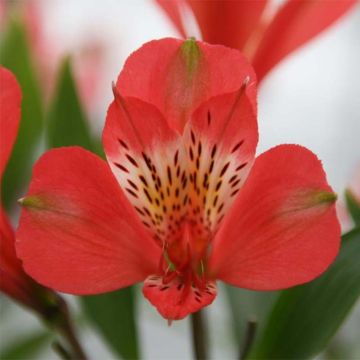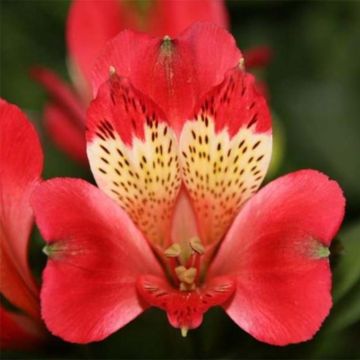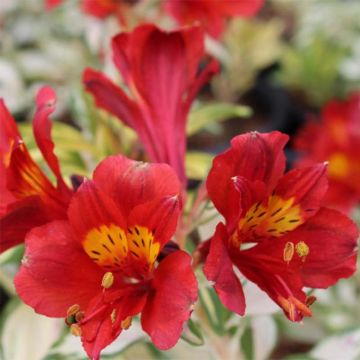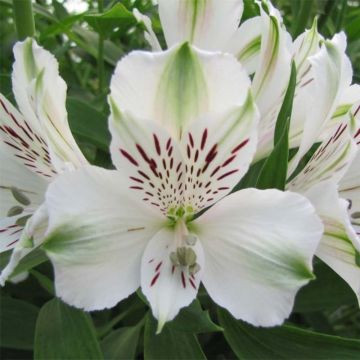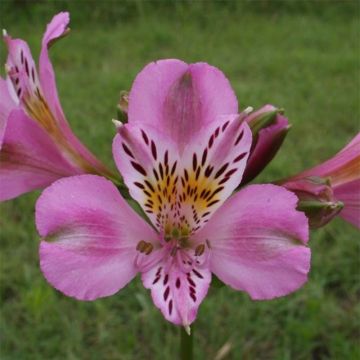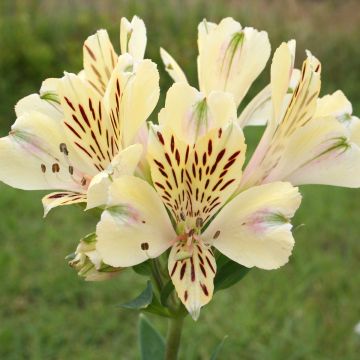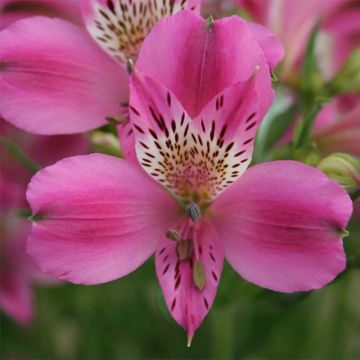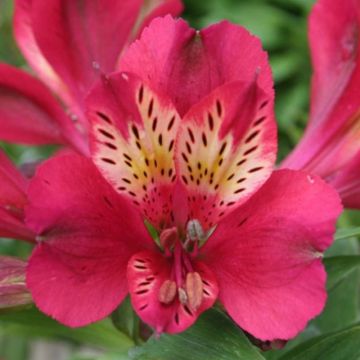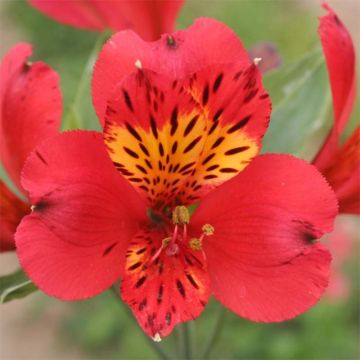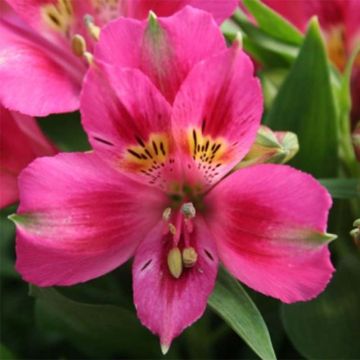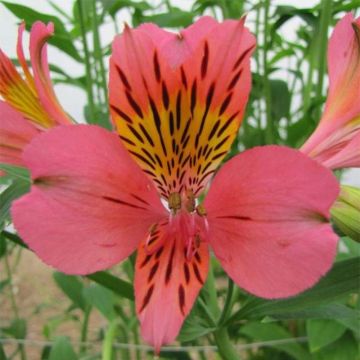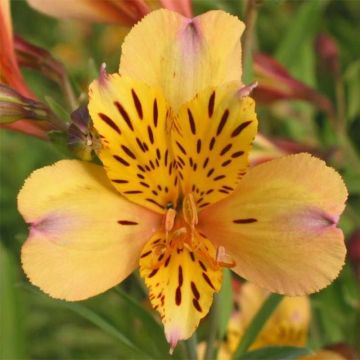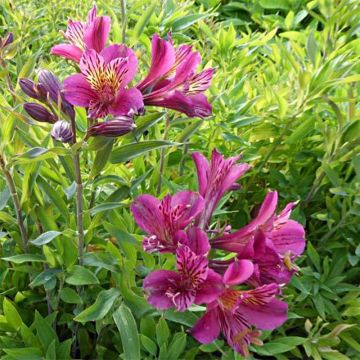Shipping country and language
Your country of residence may be:
Your country of residence is:
For a better user experience on our website, you can select:
Your shipping country:
Andorra
Austria
Belgium
Bulgaria
Canada
Chile
Croatia
Cyprus
Czechia
Denmark
Estonia
Finland
France
Germany
Greece
Hungary
Iceland
Ireland
Italy
Latvia
Lithuania
Luxembourg
Malta
Monaco
Netherlands
Poland
Portugal
Romania
Slovakia
Slovenia
Spain
Sweden
Switzerland
United Kingdom
We only deliver seed and bulb products to your country. If you add other products to your basket, they cannot be shipped.
Language:
French
German
Spanish
English
My Account
Hello
My wish lists
Plantfit
Log in / Register
Existing customer?
New customer?
Create an account to track your orders, access our customer service and, if you wish, make the most of our upcoming offers.
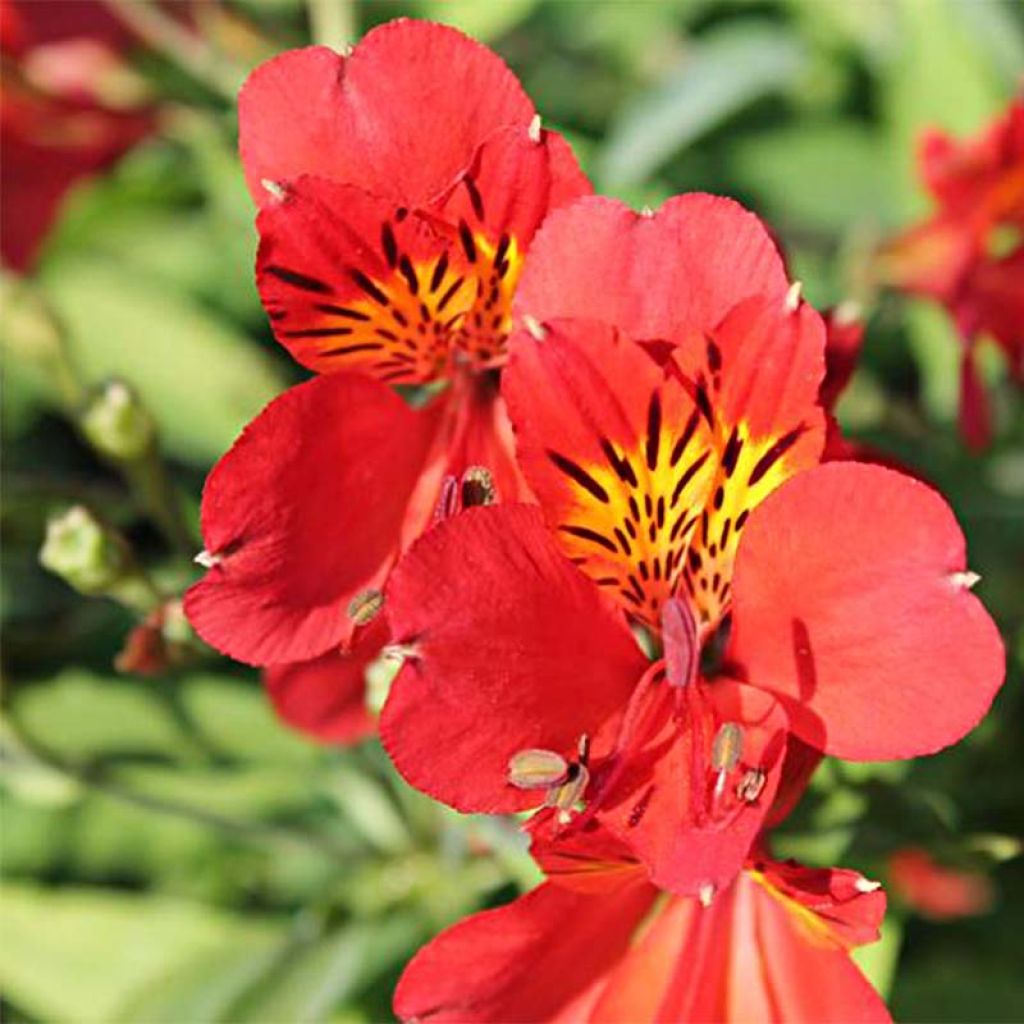

Alstroemeria Mars - Lys des Incas
Alstroemeria Mars
Alstroemeria Mars
Peruvian Lily, Lily of the Incas
a broken branch despite the rigid plastic protection
Yves V., 11/11/2018
Why not try an alternative variety in stock?
View all →Order in the next for dispatch today!
Dispatch by letter from €3.90.
Delivery charge from €5.90 Oversize package delivery charge from €6.90.
More information
This item is not available in your country.
Schedule delivery date,
and select date in basket
This plant carries a 12 months recovery warranty
More information
We guarantee the quality of our plants for a full growing cycle, and will replace at our expense any plant that fails to recover under normal climatic and planting conditions.
From €5.90 for pickup delivery and €6.90 for home delivery
Express home delivery from €8.90.
Does this plant fit my garden?
Set up your Plantfit profile →
Description
Alstroemeria 'Mars' is part of a series of hybrids selected for their floribundance, vibrant colours, and reliability. This vigorous variety of Peruvian Lily blooms throughout the summer: its beautiful flowers, intense red with yellow spots and brown stripes, open on an upright and well-branched plant, making it a stunning plant in flowerbeds or in pots on the patio. Adapted for outdoor cultivation, in all climates, it is hardy down to -15°C in well-drained soil. Its exotic-looking lily flowers are, of course, remarkable in a vase.
The series of Alstroemerias 'Planet' was developed in France by Ernest Turc. Two varieties have already been given awards by the Royal Horticultural Society for their ornamental qualities and performance in the garden. Alstroemerias, belonging to the Alstroemeriaceae family, are perennial plants with tuberous roots native to South America. The hardiest ones, like A. aurantiaca, better adapted to our climates, are native to the Chilean Andes and Patagonia. These high-altitude plants are relatively hardy, and appreciate cool and well-drained soil in light and moist wooded areas. Slow to establish, Peruvian lilies can disappear or... become invasive! Quirky but fantastic plants, very sensitive to growing conditions, they are "indestructible" when you find the right spot for them. Peruvian lilies 'Planet' are less unpredictable plants, they easily survive our normal winters in well-drained soil.
'Mars' quickly forms dense, non-suckering, and tidy clumps. They are made up of sturdy leafy stems that can reach 80 cm (32in) in height when in flower, with a spread of 50 cm. The flowering takes place continuously from June-July to late September, if the soil remains moist. The very open 5 cm (2in) flowers, are gathered in terminal umbels. They consist of 3 small central petals of a bright carmine red, widely spotted with yellow towards the base, streaked with purple-brown, surrounded by 3 wider petals of the same intense red. Each plant can produce at least 30 flowers. The foliage, abundant in this 'Mars' Alstroemeria, is arranged on the upper part of the stems. The leaves of this variety are an elegant satin dark green shade. The foliage and stems disappear in winter, leaving only slightly creeping stumps with fleshy roots underground. These roots are sensitive to transplantation, especially in older plants.
Alstroemeria Mars, when mature, creates a magnificent spectacle in flowerbeds or on a semi-shaded slope, in front of an evergreen screen composed of boxwood or holly. This plant also pairs well, for example, with the small white flowers of chamomiles or the blue perennial flax. It can also be associated with red, orange, or blue shrubby salvias, or with grasses; Stipa, small Miscanthus or Muhlenbergia capillaris will accompany its late summer flowers with their magnificent foliage and blooms. You can also plant Ceratostigma plumbaginoides beside it, with intense blue flowers and red foliage in October. A marvel! Pot cultivation is also possible.
Alstroemeria Mars in pictures
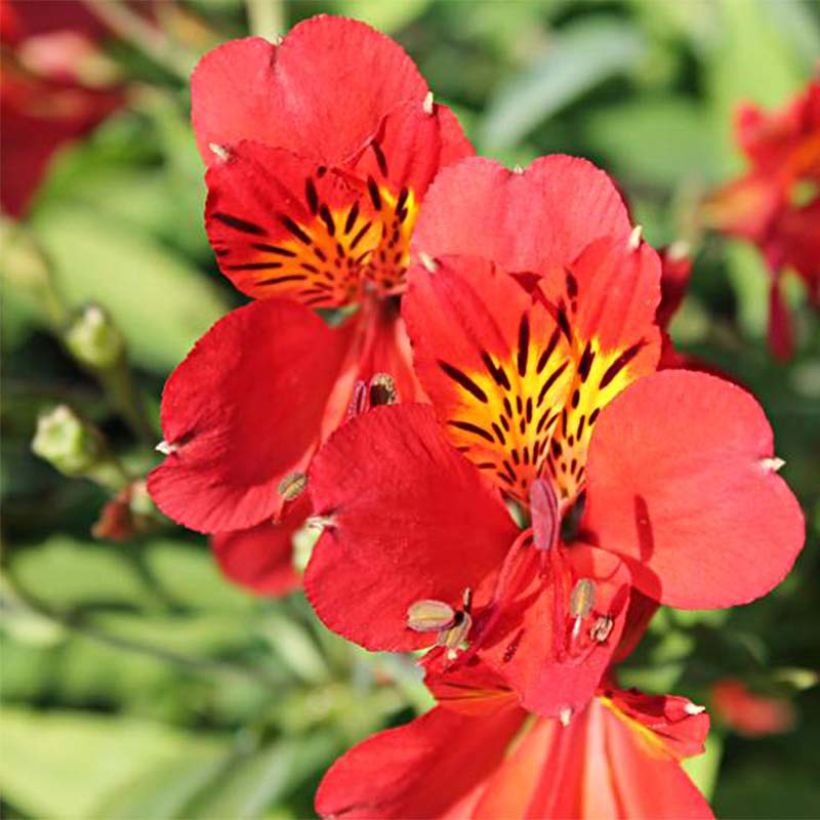

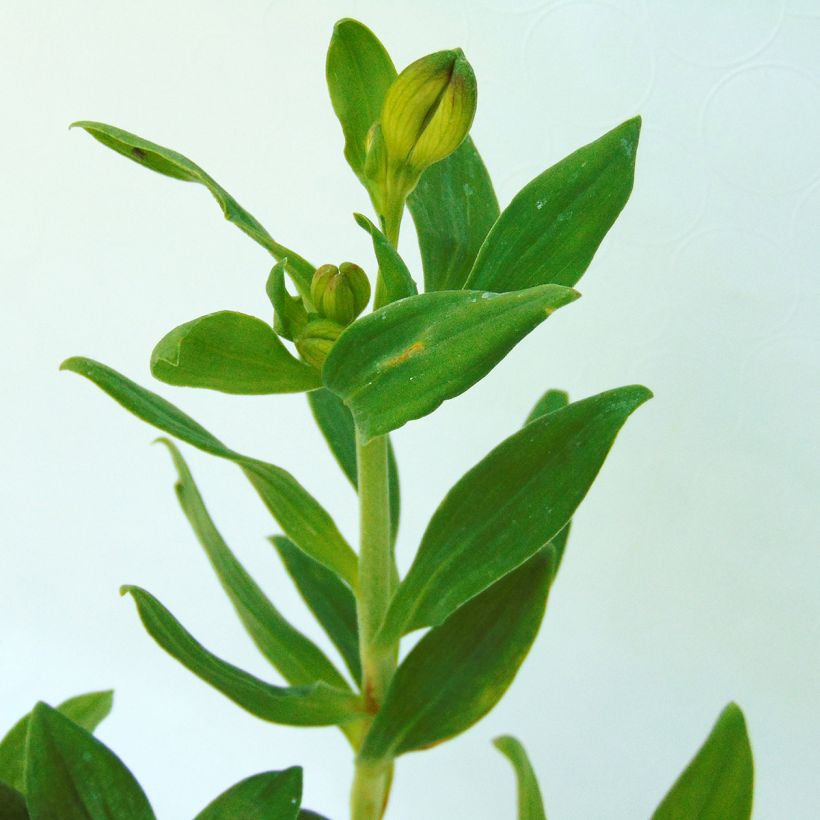

Flowering
Foliage
Plant habit
Botanical data
Alstroemeria
Mars
Alstroemeriaceae
Peruvian Lily, Lily of the Incas
Cultivar or hybrid
Other Alstroemerias
Planting and care
Alstroemerias should be planted in spring, choosing a location in the morning sun or partial shade, in a light, well-drained, well-prepared soil, preferably sandy or loamy and slightly acidic to neutral, and not too fertile. While they appreciate moisture to support their flowering, they adapt quite well to drier soils in summer. These plants are quite hardy if the soil is not waterlogged in winter. You can protect the stump with a thick mulch of leaves or fern fronds in autumn. Slugs (and tortoises) love young shoots; make sure to protect them.
As the plant completely disappears in autumn, it is preferable to mark its location. Do not hoe near the clump: the tuberous roots are often wandering and are fragile. Weed carefully by hand if necessary.
Planting period
Intended location
Care
- , onOrder confirmed
Reply from on Promesse de fleurs
Haven't found what you were looking for?
Hardiness is the lowest winter temperature a plant can endure without suffering serious damage or even dying. However, hardiness is affected by location (a sheltered area, such as a patio), protection (winter cover) and soil type (hardiness is improved by well-drained soil).

Photo Sharing Terms & Conditions
In order to encourage gardeners to interact and share their experiences, Promesse de fleurs offers various media enabling content to be uploaded onto its Site - in particular via the ‘Photo sharing’ module.
The User agrees to refrain from:
- Posting any content that is illegal, prejudicial, insulting, racist, inciteful to hatred, revisionist, contrary to public decency, that infringes on privacy or on the privacy rights of third parties, in particular the publicity rights of persons and goods, intellectual property rights, or the right to privacy.
- Submitting content on behalf of a third party;
- Impersonate the identity of a third party and/or publish any personal information about a third party;
In general, the User undertakes to refrain from any unethical behaviour.
All Content (in particular text, comments, files, images, photos, videos, creative works, etc.), which may be subject to property or intellectual property rights, image or other private rights, shall remain the property of the User, subject to the limited rights granted by the terms of the licence granted by Promesse de fleurs as stated below. Users are at liberty to publish or not to publish such Content on the Site, notably via the ‘Photo Sharing’ facility, and accept that this Content shall be made public and freely accessible, notably on the Internet.
Users further acknowledge, undertake to have ,and guarantee that they hold all necessary rights and permissions to publish such material on the Site, in particular with regard to the legislation in force pertaining to any privacy, property, intellectual property, image, or contractual rights, or rights of any other nature. By publishing such Content on the Site, Users acknowledge accepting full liability as publishers of the Content within the meaning of the law, and grant Promesse de fleurs, free of charge, an inclusive, worldwide licence for the said Content for the entire duration of its publication, including all reproduction, representation, up/downloading, displaying, performing, transmission, and storage rights.
Users also grant permission for their name to be linked to the Content and accept that this link may not always be made available.
By engaging in posting material, Users consent to their Content becoming automatically accessible on the Internet, in particular on other sites and/or blogs and/or web pages of the Promesse de fleurs site, including in particular social pages and the Promesse de fleurs catalogue.
Users may secure the removal of entrusted content free of charge by issuing a simple request via our contact form.
The flowering period indicated on our website applies to countries and regions located in USDA zone 8 (France, the United Kingdom, Ireland, the Netherlands, etc.)
It will vary according to where you live:
- In zones 9 to 10 (Italy, Spain, Greece, etc.), flowering will occur about 2 to 4 weeks earlier.
- In zones 6 to 7 (Germany, Poland, Slovenia, and lower mountainous regions), flowering will be delayed by 2 to 3 weeks.
- In zone 5 (Central Europe, Scandinavia), blooming will be delayed by 3 to 5 weeks.
In temperate climates, pruning of spring-flowering shrubs (forsythia, spireas, etc.) should be done just after flowering.
Pruning of summer-flowering shrubs (Indian Lilac, Perovskia, etc.) can be done in winter or spring.
In cold regions as well as with frost-sensitive plants, avoid pruning too early when severe frosts may still occur.
The planting period indicated on our website applies to countries and regions located in USDA zone 8 (France, United Kingdom, Ireland, Netherlands).
It will vary according to where you live:
- In Mediterranean zones (Marseille, Madrid, Milan, etc.), autumn and winter are the best planting periods.
- In continental zones (Strasbourg, Munich, Vienna, etc.), delay planting by 2 to 3 weeks in spring and bring it forward by 2 to 4 weeks in autumn.
- In mountainous regions (the Alps, Pyrenees, Carpathians, etc.), it is best to plant in late spring (May-June) or late summer (August-September).
The harvesting period indicated on our website applies to countries and regions in USDA zone 8 (France, England, Ireland, the Netherlands).
In colder areas (Scandinavia, Poland, Austria...) fruit and vegetable harvests are likely to be delayed by 3-4 weeks.
In warmer areas (Italy, Spain, Greece, etc.), harvesting will probably take place earlier, depending on weather conditions.
The sowing periods indicated on our website apply to countries and regions within USDA Zone 8 (France, UK, Ireland, Netherlands).
In colder areas (Scandinavia, Poland, Austria...), delay any outdoor sowing by 3-4 weeks, or sow under glass.
In warmer climes (Italy, Spain, Greece, etc.), bring outdoor sowing forward by a few weeks.
